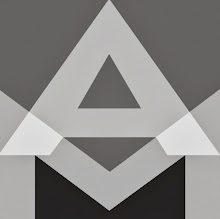Nicole White is a Lecturer in Photography at UK’s School of Art
& Visual Studies. She completed her BFA at Massachusetts College of
Art + Design in 2002. In 2010, she received her MA in Art History from the
University of Connecticut, and her MFA in Studio at the School of the Art
Institute of Chicago in 2012. Her artwork examines the reproduction and
dissemination of photographic images, particularly with a focus on the shifting
materiality of the medium. See http://www.nicolewhite.net/
This summer, Nicole is spending time at the Museum, finding
artworks of interest and photographing them as a continuation of her ongoing
research. She answered a few questions from Director Stuart Horodner about this
project:
SH: You
were sharing some recent photographs at a meeting of the Lexington Camera Club,
and I was struck by their abstract and process-centric vitality. Can you
describe what they are, how you made them?
NW:
Those particular images came from an ongoing series loosely titled “Light
Studies”. As of late, I have been working in a reductive process and thinking
primarily about how materials can be transformed through the camera using
light, reflections, and time. The images in this series have all been
produced differently (different cameras, printing methods, etc.). The process
is dictated by what the materials are in front of the camera. The one piece we
spoke about at length was Untitled (Ivory), a diptych that I shot at the
Lizzadro Museum of Lapidary Art just outside of Chicago. In this instance, my
final image was made via a long exposure of light passing through a thinly
carved ivory folding screen. I photographed the piece from the “wrong” side
–the verso—in order to reduce the carved scene to silhouettes.
When I make
images, I’m not always attempting to abstract something to the point where the
original reference in lost; I try to create a space where the thing depicted
has been transformed in a manner that asks for a longer engagement with the
final work.
SH: It
seemed like a no-brainer to invite you to work in the Museum as we get ready to
reinstall our permanent collection, giving you access to our storage area and
the freedom to use our holdings for your own investigation. What are you
thinking about as you begin?
NW: First
and foremost, I was immediately reminded of my past experiences as an archivist
and collections/curatorial assistant at various institutions of over the past
decade. “Institutionalized objects” are fascinating both in and of themselves
along with the processes employed to keep them stable. However, with this
project I am approaching the collection as an artist, which means that I have
the ability to juxtapose objects and materials in ways that otherwise would
never occur.
I’m looking
at this experience as a site for recontextualizing the objects and the space
that contains them (i.e. the museum). Most of the objects that I am drawn to
are those that are in states of change or have a compelling tactile quality.
SH: The
embedded artist in a museum or collection is now a very established
strategy—Fred Wilson and Louise Lawler immediately come to mind. But your
image-making seems less about critiquing the institution or the art industry,
and more about using objects in a more generative way. Are there any historical
or contemporary artists/photographers whose works connect to this
project?
NW: James
Welling’s Glass House photographs would be one of the most immediate
references. His images are an examination of light and reflection/refraction
rather than documents of the architecture. The building itself acts as a
backdrop for experiments that engage with Philip Johnson’s ideas but produce a
completely new interpretation of the environment.
Also,
Spencer Finch’s approach to object production is one that speaks to my
interests as well. Many of his works reference specific optical or
ephemeral qualities of canonical artworks through another medium. I recently
saw one of his florescent light sculptures, Shadow, Sculpture of Centaur,
Tuileries (after Atget), and was struck by the lengths at which Finch went
to recreate a particular experience of color from an aged photograph. It’s a
virtually impossible task, yet he attempts to tackle it – and while producing
an equally beautiful object.
And,
as you mentioned, there is a long history of photographers working within the
museum’s walls. Those works are doing something different than what I hope to
achieve, but I do think that their existence is what allow me to move from that
conversation to one of closer inspection. They build a framework that I have to
acknowledge and be aware of as I utilize some of their tactics in my project.
Based
on some of our conversations, I sense that you have a real desire to find new
ways to connect the museum to the larger university. For you, what is the
benefit to having an artist come in and rifle through the collection?
SH: Yes,
one of the major reasons I wanted to work here was to animate the museum by
establishing numerous ways it could be used by the campus community. Logical
partners are colleagues at the School of Art and Visual Studies, but also those
faculty and students in music, theatre, architecture, creative writing,
philosophy, etc.
I like
seeing how flexible institutions can be. I want to allow artists like yourself
to see the museum from another POV, and use it as a studio or lab. I have no
idea if this will yield interesting results but I want to see what happens.
This is simultaneously generous and selfish. We're all enjoying you being
here examining the collection with us, and making unique images that we can
share with our various audiences.





